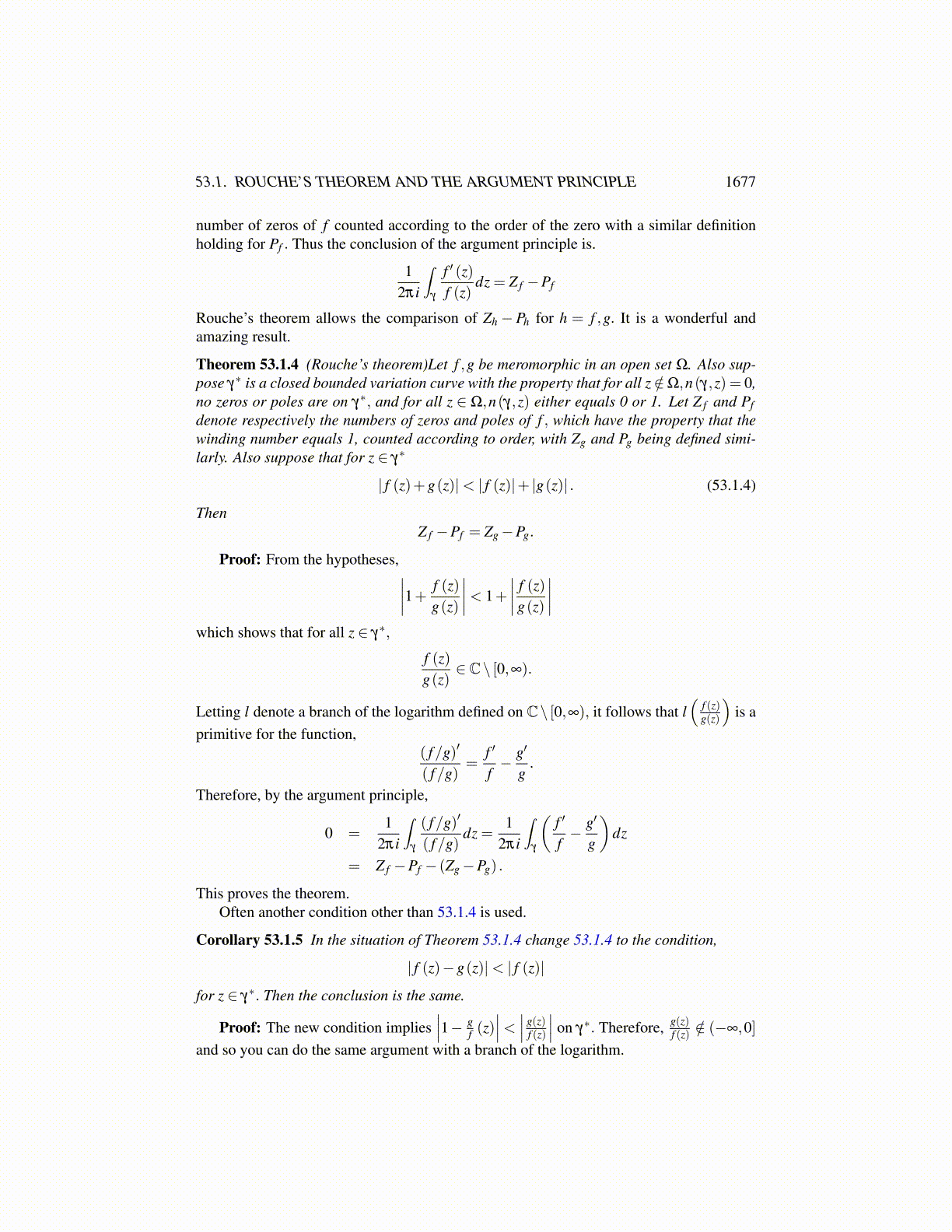
53.1. ROUCHE’S THEOREM AND THE ARGUMENT PRINCIPLE 1677
number of γ about these points equals 1. Let zk be a zero of order rk and let pk be a pole oforder lk. Then
12πi
∫γ
f ′ (z)f (z)
dz =n
∑k=1
rk−m
∑k=1
lk
Proof: This theorem follows from computing the residues of f ′/ f which has residuesonly at poles and zeros. I will do this now. First suppose f has a pole of order p at α. Thenf has the form given in 53.1.3. Therefore,
f ′ (z)f (z)
=h′ (z)−∑
pk=1
kbk(z−α)k+1
h(z)+∑pk=1
bk(z−α)k
=h′ (z)(z−α)p−∑
p−1k=1 kbk (z−α)−k−1+p− pbp
(z−α)
h(z)(z−α)p +∑p−1k=1 bk (z−α)p−k +bp
=r (z)− pbp
(z−α)
s(z)+bp
where s(α) = 0, limz→α (z−α)r (α) = 0. It has a simple pole at α and so the residue is
res(
f ′
f,α
)= lim
z→α(z−α)
r (z)− pbp(z−α)
s(z)+bp=−p
the order of the pole.Next suppose f has a zero of order p at α. Then
f ′ (z)f (z)
=k
z−α
∑∞k=p ak (z−α)k−1
∑∞k=p ak (z−α)k−1 =
kz−α
and from this it is clear res( f ′/ f ) = p, the order of the zero. The conclusion of this theoremnow follows from the residue theorem Theorem 53.0.3.
One can also generalize the theorem to the case where there are many closed curvesinvolved. This is proved in the same way as the above.
Theorem 53.1.2 (argument principle) Let f be meromorphic in Ω and let γk : [ak,bk]→Ω,k = 1, · · · ,m, be closed, continuous and of bounded variation. Suppose also that
m
∑k=1
n(γk,z) = 0
and for all z /∈ Ω and for z ∈ Ω, ∑mk=1 n(γk,z) either equals 0 or 1. Now let {p1, · · · , pm}
and {z1, · · · ,zn} be respectively the poles and zeros for which the above sum of windingnumbers equals 1. Let zk be a zero of order rk and let pk be a pole of order lk. Then
12πi
∫γ
f ′ (z)f (z)
dz =n
∑k=1
rk−m
∑k=1
lk